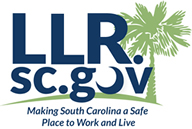Housing Supply Overview
Supply remains low in most markets and categories. Buyer demand continues to show that there is room for growth, but we still have not reached a point where a year-over-year increase in the number of homes for sale can be anticipated. For the 12-month period spanning April 2017 through March 2018, Pending Sales in the Western Upstate region were down 0.9 percent overall. The price range with the largest gain in sales was the $150,001 to $200,000 range, where they increased 8.4 percent.
The overall Median Sales Price was up 5.3 percent to $165,389. The property type with the largest price gain was the Condos segment, where prices increased 9.4 percent to $122,000. The price range that tended to sell the quickest was the $150,001 to $200,000 range at 57 days; the price range that tended to sell the slowest was the $300,001 and Above range at 106 days.
Market-wide, inventory levels were down 5.3 percent. The property type that gained the most inventory was the Condos segment, where it increased 13.6 percent. That amounts to 4.5 months supply for Single-Family homes and 4.9 months supply for Condos.
Monthly Indicators
New residential real estate activity has been relatively slow in the first quarter of 2018, yet housing is proving its resiliency in a consistently improving economy. Some markets have had increases in signed contracts, but the vast majority of the nation continues to experience fewer closed sales and lower inventory compared to last year at this time. Despite there being fewer homes for sale, buyer demand has remained strong enough to keep prices on the rise, which should continue for the foreseeable future.
New Listings were up 0.8 percent to 763. Pending Sales decreased 23.2 percent to 400. Inventory shrank 5.3 percent to 1,945 units.
Prices were still soft as Median Sales Price was down 0.9 percent to $164,200. Days on Market increased 70.0 percent to 119 days. Months Supply of Inventory was down 4.2 percent to 4.6 months, indicating that demand increased relative to supply.
The Federal Reserve raised its key short-term interest rate by .25 percent in March, citing concerns about inflation. It is the sixth rate increase by the Fed since December 2015, and at least two more rate increases are expected this year. Borrowing money will be more expensive, particularly for home equity loans, credit cards and adjustable rate mortgages, but rising wages and a low national unemployment rate that has been at 4.1 percent for five months in a row would seem to indicate that we are prepared for this. And although mortgage rates have risen to their highest point in four years, they have been quite low for several years.
To view these, and previous, market reports click here.



